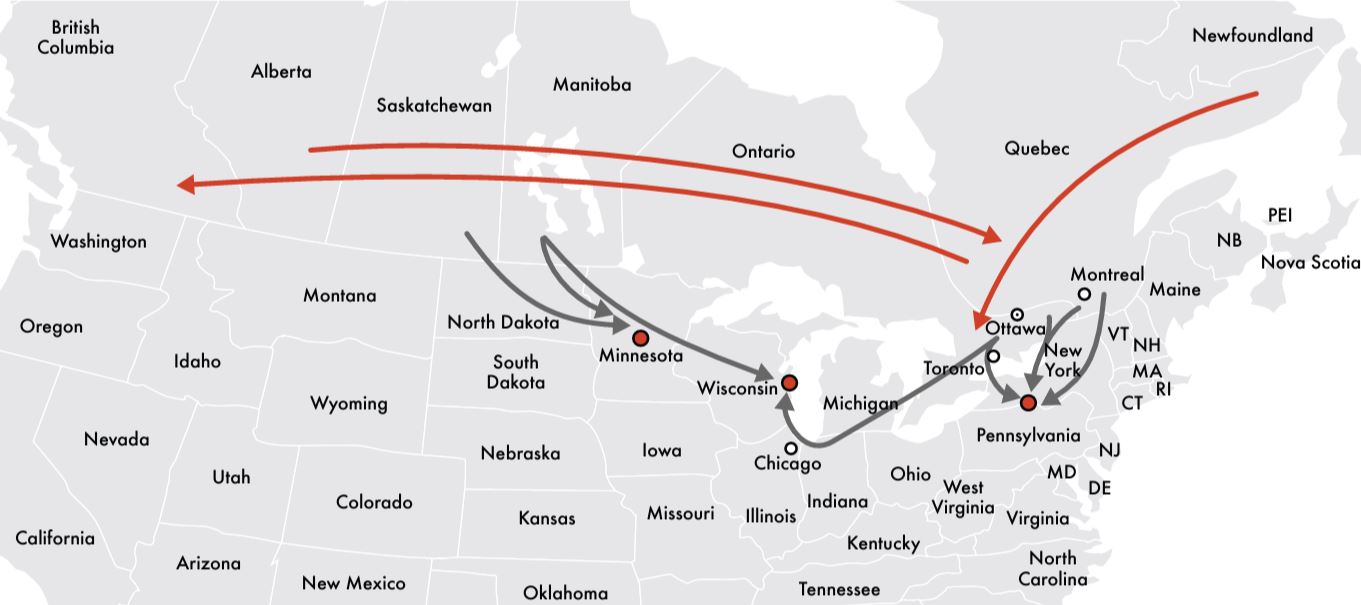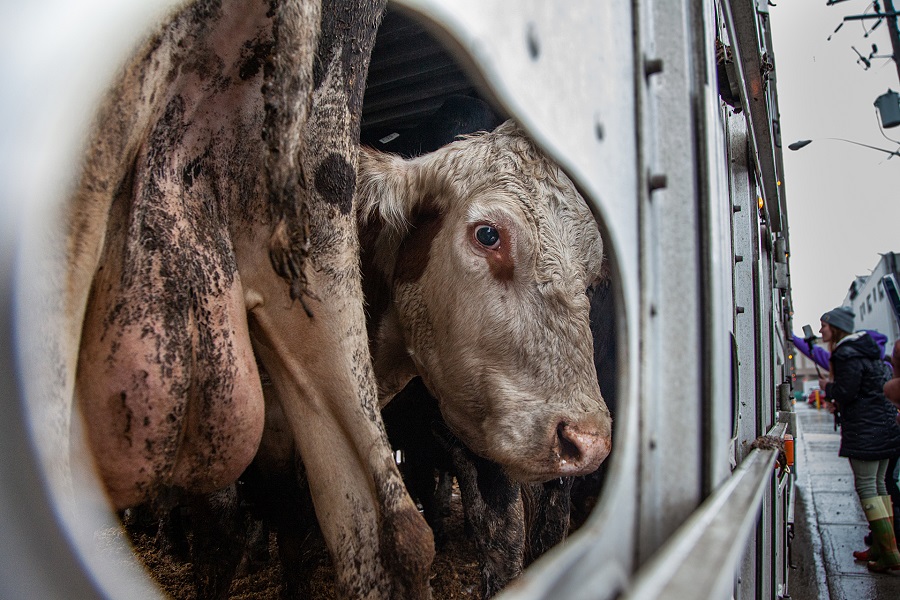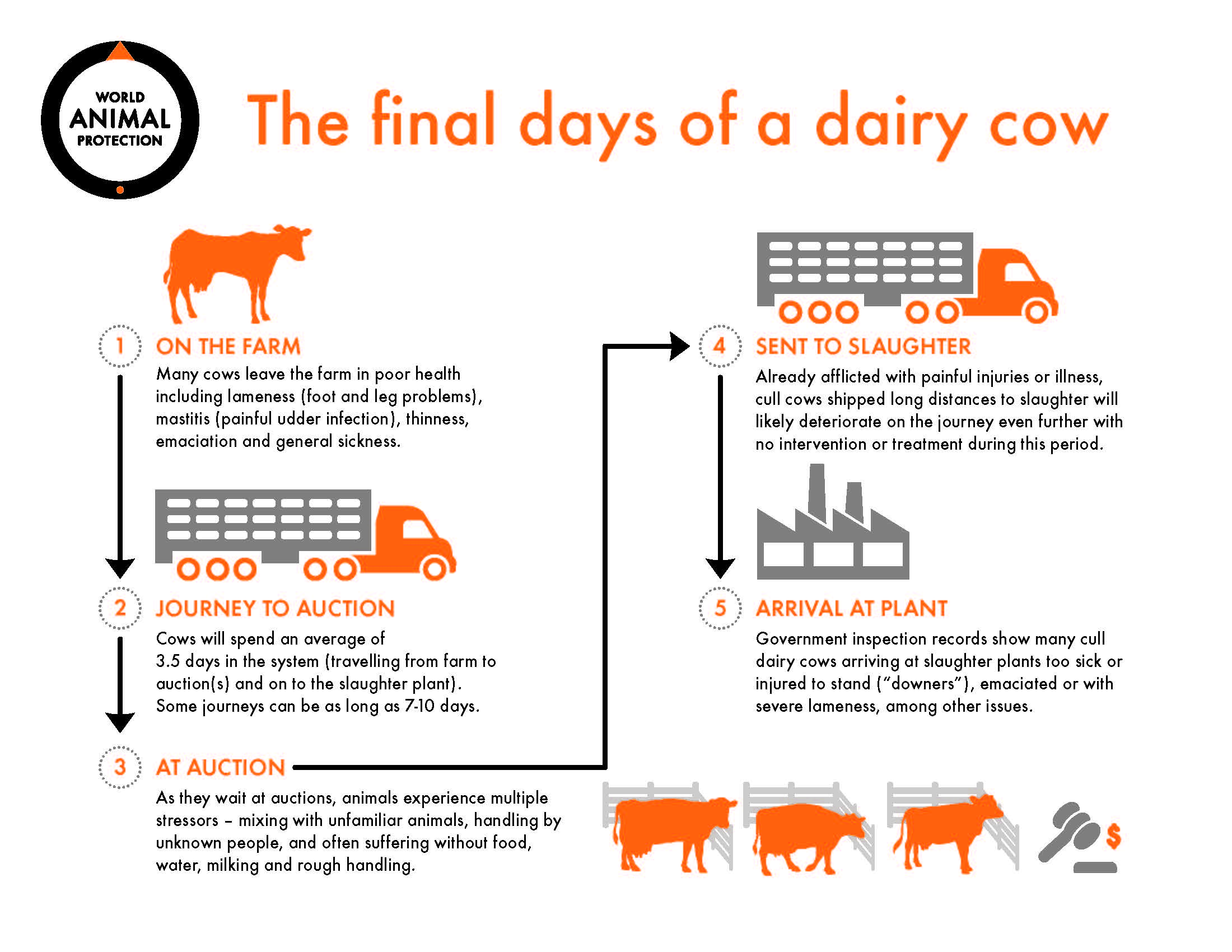
The final days of a dairy cow
Blog
A dairy cow's journey to slaughter is long and full of misery. The suffering of dairy cows in their final day is one of the most overlooked issues of the dairy industry.
Every year, around 32% of the current dairy cow population is “removed” (culled) and sent to slaughter. This is an account of their final days:
Last days on the farm
Once dairy cows stop producing enough milk to be profitable or they are too sick or injured, they are removed from the milking herd to be sent to slaughter. These cows are either sent to auction to be sold (the most common route) or shipped directly to slaughter. Many cows will leave the farm in poor health including lameness (foot and leg problems), mastitis (painful udder infection), thinness, emaciation and general sickness.
A long journey to auction
In Canada, we have limited local slaughter options, which means these dairy cows travel long distances to reach their final destination. Dairy cows spend an average of 3.5 days in the system (travelling from farm to auction(s) and on to the slaughter plant), but some journeys can be up to 7-10 days.
Research found dairy cows from Newfoundland are being slaughtered in Ontario, 2,500 km away, and dairy cows from Quebec were identified in slaughterhouses in British Columbia - a distance of 4,500 km! Many cows will also be shipped to slaughterhouses in the United States.

Transport routes of dairy cows in Canada (red arrows) and from Canada to the United States (grey arrows). Figure from our “Milking the Cow” report.
Transportation is a particularly stressful time for all cattle, regardless of their health status. For these fragile dairy cows, the long journey often leads to further deterioration.
Stress at the auction yard
Once they arrive at auction, they will experience multiple stressors – mixing with unfamiliar animals, being handled by unknown people, and often suffering without food, water, or milking.
At this point, many of the cows are in poor health condition. Numerous studies have reported a high prevalence, more than 20%, of dairy cows experiencing health conditions.
Sold and sent to slaughter
Already afflicted with painful injuries or illness, cull cows shipped long distances to slaughter will likely decline on the journey even further with no intervention or treatment during this period. 
Credit: Louise Jorgensen / Animal Sentience Project / We Animals Media
Arrival at the slaughter plant
Government inspection records show many dairy cows arriving at slaughter plants are too sick or injured to stand (“downers”), emaciated (thin) or with severe lameness, among other issues.

You can help end the suffering
One of the best ways to help dairy cows and other farmed animals is to reduce the amount of meat and dairy you consume. Doing so will support a transition to a more humane and sustainable food system.
Not sure where to start? Get our humane shopping guide to help you decipher food labels and make compassionate choices.
Sadly, there are animals suffering on factory farms across Canada. You can help put an end to this unnecessary suffering by sign our petition to the Federal government to demand a moratorium that will stop new factory farms in Canada.
A Canada with fewer factory farms is a Canada where more animals can flourish, living the content and natural lives that they deserve.
Continue learning:
The neglected welfare of cull dairy cows: addressing the tragic reality for end-of-life dairy cows in Canada
Blog
Our new report sheds light on the often-overlooked animal welfare issues faced by cull dairy cows in Canada, from painful health conditions to long-distance transport and neglect. It offers key recommendations to improve their welfare and calls for a multi-stakeholder approach to address the systemic failures that perpetuate animal suffering.
Cull dairy cows face a long, arduous journey to slaughter
Blog
An estimated 560,000 cull dairy cows are sent to slaughter each year, many of whom are in poor health and deteriorate quickly on the long journey.

